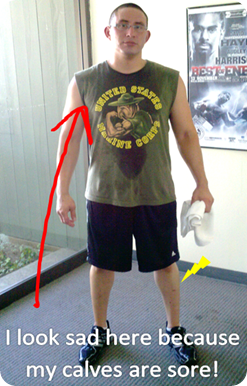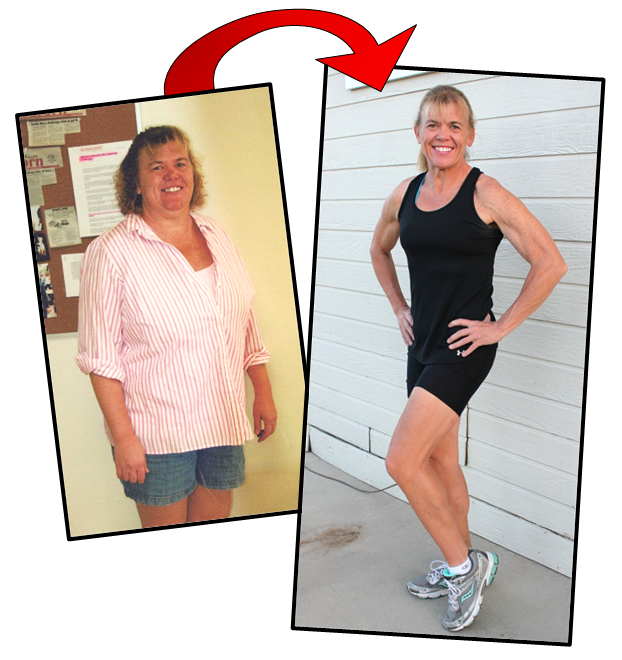12 Easy Ways to Prevent & Treat Muscle Soreness
Everyone experiences sore muscles sometimes – it’s how you know you
really had a good workout right? Well, here are some awesome ways to
reduce your discomfort…
Things you can do before your training session
Hydrate – This should go without saying, but people forget. Drinking plenty of water is one of your best defenses against muscle soreness. I recommend 96 ounces per day to my clients.
Front-load your nutrition – The food you eat before you workout is the fuel that your body will use to repair your muscles. Make sure to get plenty of good nutrition the day(s) before a heavy training session. A good rule of thumb for your macronutrient ratios the day before training is 40% protein, 40% carbs, and 20% fats. This should serve as a starting point for individual experimentation. The day of your training session you should be eating a diet high in protein, complex carbs, and “good, healthy” fats.
Get plenty of sleep the night before – Again, this is common sense, but if you’re not getting enough quality sleep, then you’re putting your body at a recovery disadvantage from the beginning. 7-9 hours per night is the current Surgeon General’s official recommendation for adults.
Things you can do during your training session
Warm-up properly – One of the best things you can do to prevent muscle soreness is to perform a joint mobility warm-up (a general full-body warm-up is preferred, but mobility exercises specific to your exercise selection will work just fine, too), and then to do activity-specific exercises that will prime the sections of your body that you’ll be primarily focusing on during that session. So, if you’re going to be working on squats, for instance, it’s best to include some bodyweight squats in your warm-up routine and gradually build up to your desired working intensity level.
Shake off the tension between work periods – This is a little secret weapon against muscle soreness, called vibration training. No, you don’t need to stand on one of the high-tech vibrating platforms that they have at high class health clubs. You CAN shake off the tension though, in between sets. You can shake your arms and legs out, even your whole body. This simple technique works very well to diminish muscle tension and you don’t need anything to start applying it today. Plus, it has a lot of other cool benefits, too.
Establish a cool down ritual – In my experience, those who engage in a workout cool down ritual are much less likely to suffer from DOMS. Apart from preventing muscle soreness, it’s a good idea anyways. Some joint mobility exercises are ideal here, but what’s most important is that you unload the functional opposite movements that you were training during your session. So, for instance, if you were doing a lot of squatting movements, you’d want to release tension in your hip flexors by doing a hip flexor stretch.
Things you can do after your training session
Get adequate post workout nutrition – There is so much research backing this as a viable recovery strategy, it’s not even debatable anymore. You don’t need to do this, but it will help a lot. Even a post workout shake or bar will do a lot of good. A good rule of thumb is to consume a carbohydrate to protein ratio of 2:1. Eating 25 grams of carbs and 12 grams of protein following your session is a good place to begin personal experimentation.
Perform active recovery frequently – Too often we think of recovery as being a completely restful activity, when the best thing we can often do to recover is get moving. Active recovery can be any form of light activity such as walking, joint mobility exercise, or very light strength training such as bodyweight exercise or swinging kettle bells.
Take a hot/cold shower – This is not going to make a big impact on DOMS prevention and treatment, but it will help a little bit. Contrast showers can help to increase blood flow and aid in getting nutrients in your bloodstream out to your muscles. Alternate showering with warm water and cold water for 20-30 second intervals.
Take an Epsom salt bath or soak in a hot tub – Sometimes all we need to prevent muscle soreness is a little relaxation. Spending 30 minutes in a hot tub or Epsom salt bath will decrease muscle inflammation, flush toxins out of your muscles, improve nerve function, and will otherwise relieve stress.
Ice your muscles – Icing your muscles will not necessarily aid in the healing process, but it will reduce swelling and pain. It’s a temporary relief from pain that can serve as a good alternative to taking anti-inflammatory drugs.
Get a massage or massage the sore areas yourself – A massage will have many benefits in terms of muscle relaxation, pain reduction, and stress relief.
Give these a try for your next work out session and I bet you will feel a whole lot better!
Two of the most common areas in which I get
soreness are my calves and hips. What are
some problematic areas for you?
![]()






